Did you know that how you care for your rose bushes in the fall before winter arrives can make a huge difference in not only their health but also their ability to bloom the following spring and summer?
It’s true! What you do and what you don’t do to your roses in the autumn months can have a big impact on how well they survive winter – and how well they perform the following season.
The good news is that preparing your roses for the cold ahead doesn’t have to be difficult or time consuming. Even though some resources suggest taking drastic measures involving rose cones, dormant sprays and more – the process can actually be a lot more simple than that.
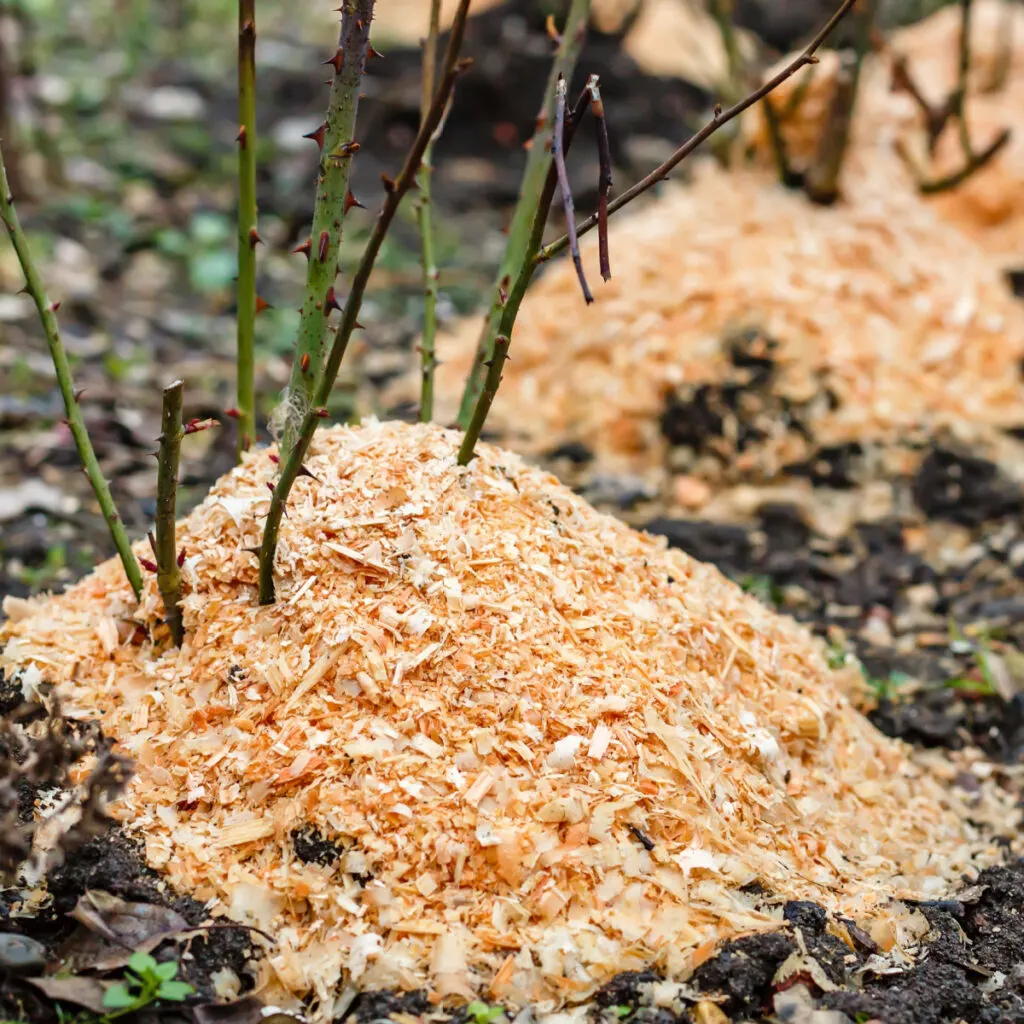
Some rose varieties are hardier than others and can withstand the brutal elements and temperatures winter throws at them. And without much help. It’s also important to note that you can provide your roses with too much winter care, which can also put your plants at risk of freezing out or possibly dying off altogether.
The important thing is to start by knowing your roses. When it comes down to it, most all types of roses require some form of winterization to help them through. And that is exactly what today’s article is all about.
With that in mind, here is a look at few simple tips on what should and shouldn’t be done in the fall so you can know with confidence that your roses are protected and safe from whatever winter throws at them.
Caring For Rose Bushes In The Fall – A Few Things To Avoid
Pruning
While fall is a great time for pruning and cleaning up some perennial plants and trees, rose bushes should not be included on that list. Whether you have climbing roses, shrub roses, or hybrid roses, pruning is a no-go in the fall. (See “Dividing Perennials In The Fall“)
When you prune off a part of a rose bush, the plant sends a signal to start regrowing that area. If you prune too early in the fall and the weather stays warm for a while, your rose bush will end up creating new growth all over.
This tender new growth is then susceptible to being killed off when the first frost or freeze occurs. The entire plant is then put at risk of freezing out when winter temperatures arrive.
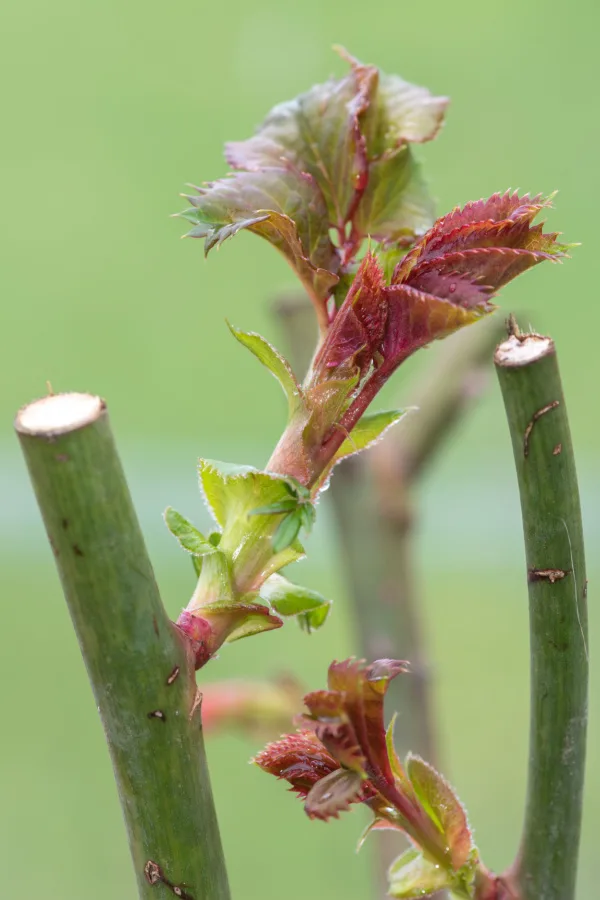
Instead of pruning in the fall, wait until the plant is completely dormant in the winter months. Late January or February in most locations is a perfect time for pruning roses. At this point, there is no threat of the dormant plant pushing out new growth.
Only prune broken or damaged branches in the late fall if absolutely necessary. Also, avoid pruning newly planted rose bushes altogether during their first year.
Fertilizing
In addition to pruning, you should also avoid fertilizing your rose bushes in the fall. Fertilizing encourages the plants to produce new growth. Since new growth can easily become victim to cold temperatures, it is best to never fertilize in the fall.
How To Care For Roses Bushes In The Fall – What To Do With A Rose Bush Before Winter
Exactly how you prepare your rose bushes for winter will depend on a couple of factors. First, you need to keep in mind your growing location and climate.
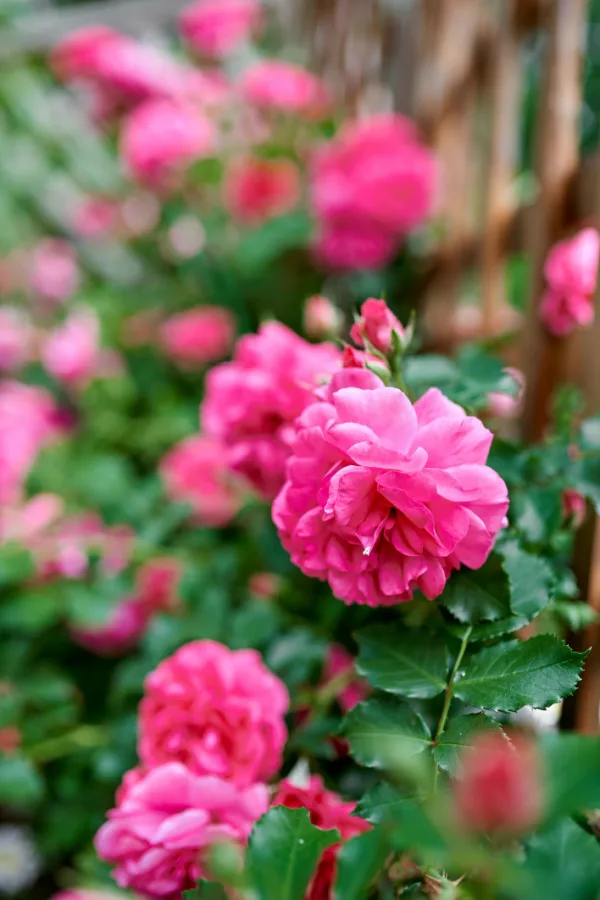
If you live in a warmer location, it’s likely that your rose bush will never become fully dormant. While they might not produce blooms anymore, they won’t need any additional care over the winter months. For colder locations, however, protecting your rose bushes is vital for their survival.
Besides your climate, the variety of rose bush you are growing will dictate how you care for them in the fall. The three main types are climbing roses, hybrid and tea roses, and shrub roses.
Climbing Roses
Climbing roses need more protection when it comes to wind damage as opposed to cold temperatures. Their long canes can easily become broken or damaged from strong winter winds or by snow and ice piling up.
If your roses are climbing up a support, structure, or trellis of some sort, the best step is to carefully tie them up to the support. Then, add a thick 6 to 8-inch layer of wood chips, straw, or compost around the base of each plant. You can remove the ties after winter is over but the mulch is fine to leave.

If there are no supports for your climbing roses, the best step is to tie the canes together with a rope or twine to keep them bundled together. Then, gently lay the cane bundles down on the ground and cover them with a four to six-inch layer of organic mulch. Once winter is over, remove the mulch and untie the bundles.
Hybrid & Tea Roses
One of the first steps to take to winterize and care for hybrid and tea rose bushes in the fall is to rake out all of the leaves from underneath the plants. The leaves can harbor insects and disease and allow them to overwinter, so removing the leaves is a must.
Next, apply a 6 to 8-inch layer of fresh wood chips, straw, or compost around the base of each rose bush. You want to make sure that you are covering the grafts or stem unions. These areas are the most vulnerable to winter damage.
Once the warmer spring weather arrives, be sure to remove the extra mulch though so the grafts can start to push out new growth freely.
For locations with extremely harsh winters and sub-zero temperatures, consider covering hybrid and tea roses with plant covers. Just be sure to remove any excess snow and ice from the covers to prevent additional damage. (Affiliate Product Link: Rose Bush Plant Covers)
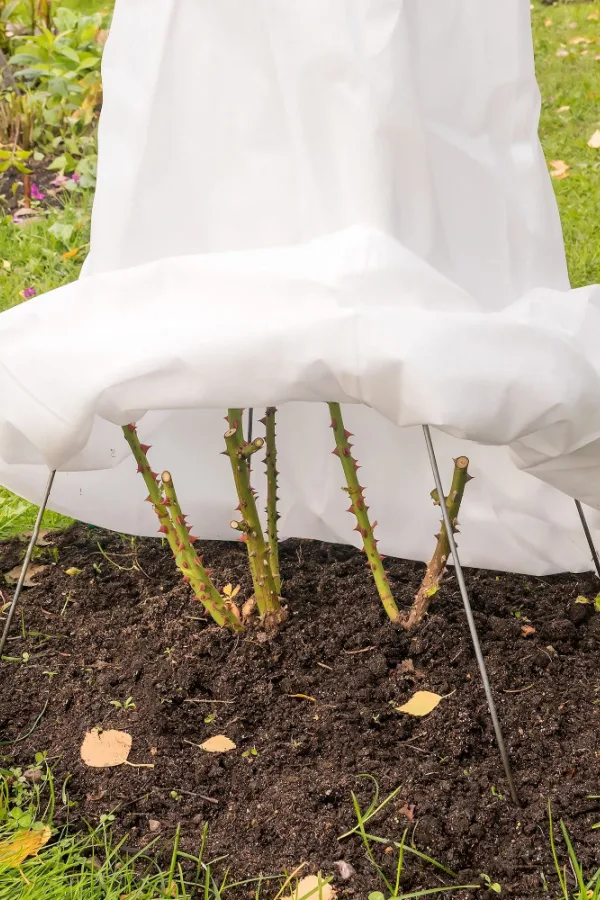
Shrub Roses Bushes
Of all the different types of roses, shrubs are by far the easiest to care for. In fact, they can usually be prepared for winter in mere minutes!
After your location has experienced a few frosts, the plants should be in full dormancy. Remove any leaves that have fallen around the bush like you would for the other rose varieties. Again, this is to help discourage overwintering disease and pests from setting up shop.
Then, simply add a few inches of compost around the base of each plant. The compost will help to add vital nutrients once spring hits while still giving the plants some winter protection at the same time.
Potted Roses
How you care for your potted rose bushes in the fall will depend on your location. In locations with mild winters, you can simply add a thick layer of mulch or use straw bales to surround the container of the rose bush. This is usually enough to get the plant through milder winters.
For colder climates, you can bury the rose bush – pot and all – in the soil. This will make sure the base is protected by the ground. Another option is to bring potted rose bushes inside to an unheated garage or shed.
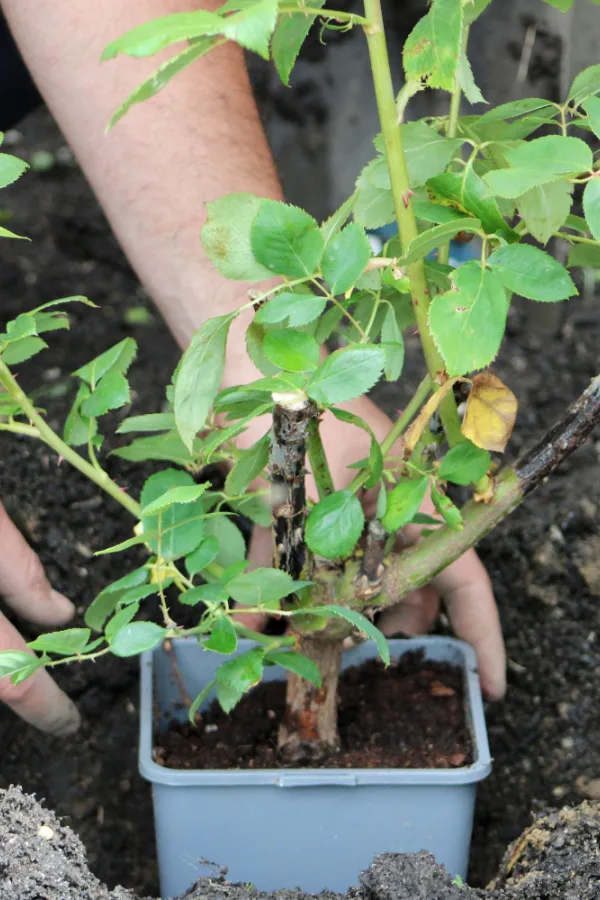
Alternatively, you can create a sort of protected frame around the plant by using wooden or steel posts. Drive the posts into the ground around the plant, making sure they are a bit taller than the rose bush.
Next, wrap the posts and the plant with heavy burlap or blankets to create a sort of tent for the rose bush. Use rope or twine to secure the blankets in place. Remove any accumulating snow or ice from the tops of the blankets throughout winter.
By taking these simple steps, you can keep all of your rose bushes safe and protected from whatever harsh elements winter decides to throw at them!
Follow Our Facebook Page For Even More Great Tips! Simple Garden Life Facebook Page
Simple Garden Life is a website dedicated to keeping gardening fun, simple and enjoyable! We publish two new articles each week along with a new garden podcast episode every two weeks. This article may contain affiliate links.
